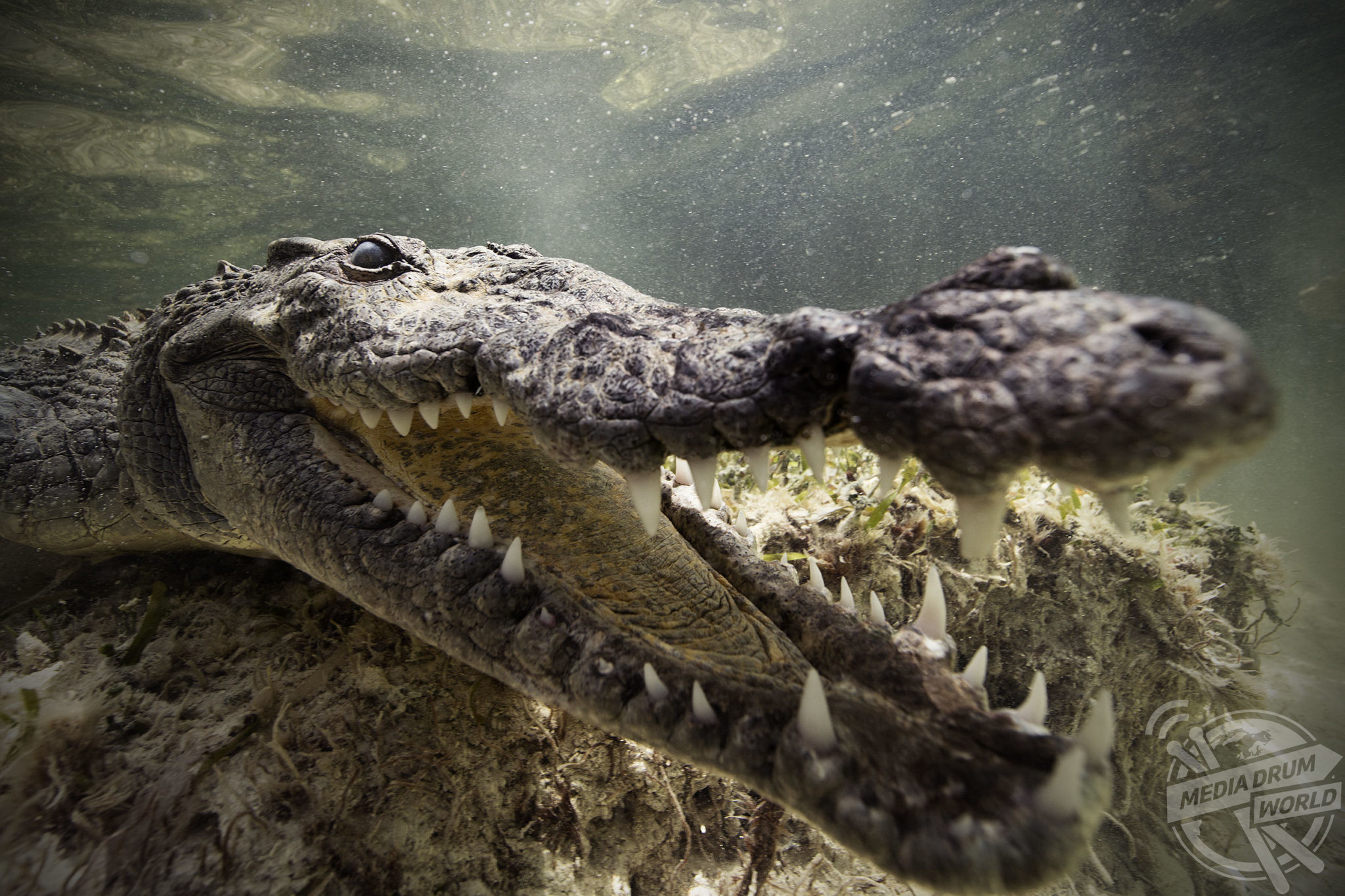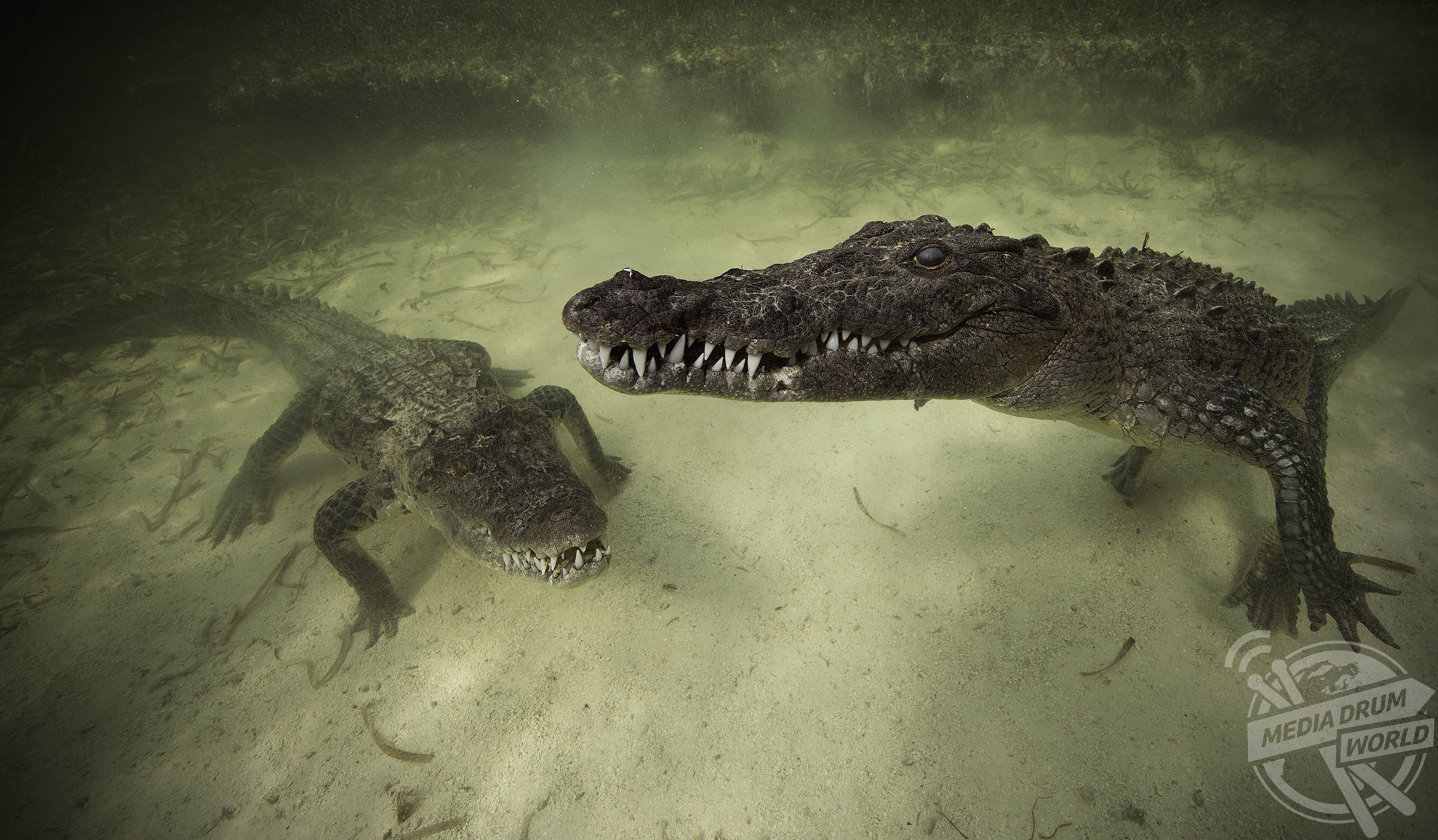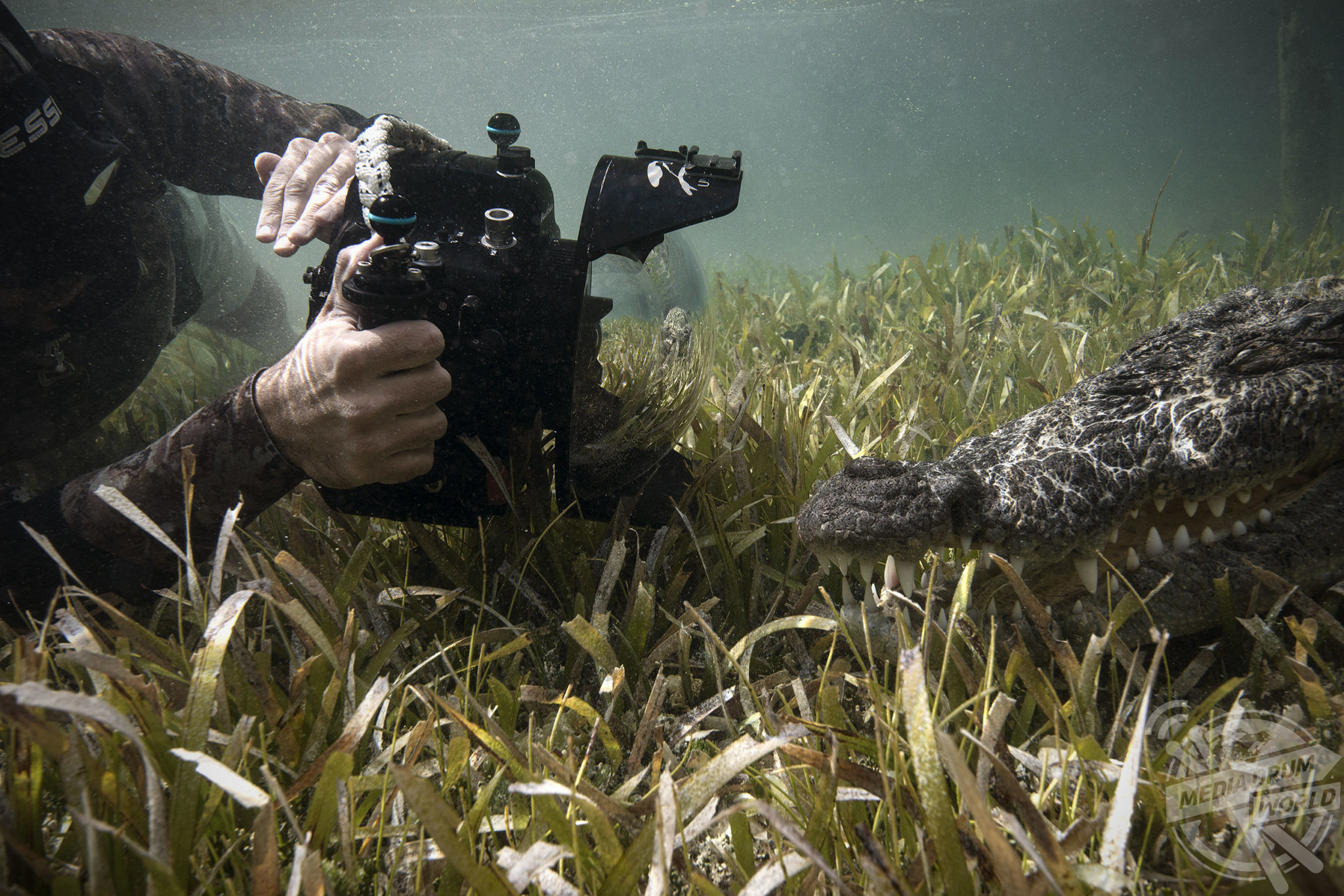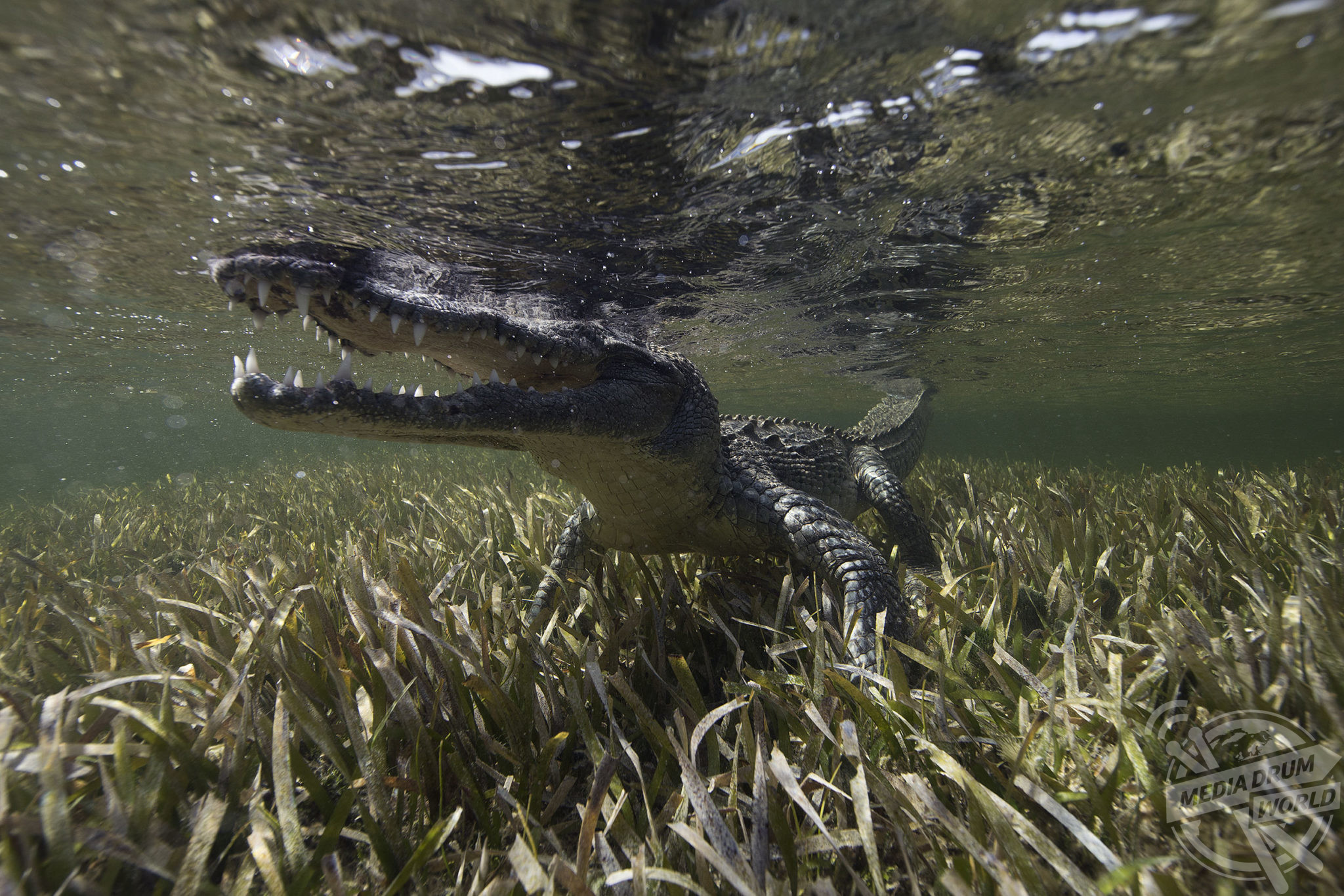By Alex Jones
HEART-STOPPING footage shows a fearless underwater photographer coming eye-to-eye with an enormous TWELVE-FOOT crocodile – before provoking the massive beast with a BELLY RUB.
A jaw-dropping video and photos show award-winning photographer and predator expert, Jorge Cervera Hauser (35), locked in an intense staring contest with the epic American crocodile with their faces just inches apart; the carnivorous reptile reacting angrily to Hauser tickling its flank and a snarling snap of a croc and its fearsome array of teeth as it charges at the photographer and his camera.
Hauser captured the magnificent footage whilst snorkelling in Chinchorro Atoll in Mexico. Despite years of working with potentially deadly animals, Hauser’s exotic adventure only had dire repercussions.

“Through non-profit Pelagic Life, which I run along my friends, we were some of the very first people to document American crocodile in Chinchorro,” explained the wildlife photographer, who has appeared in most of the world’s leading nature publications.
“After doing some research, we realised there was a 200+ croc population on a tiny remote island in the middle of the Mexican Caribbean, very close to Belize. The crocs would come out to the ocean to look for prey – usually birds or tarpons – where the visibility is great for photography. We got the permits and did our first exploratory trips. Years later, we returned to grab these amazing images with GoPro.
“At one point I was far away from the rest of the guys photographing a large croc. He started doing a few warning charges towards me, forcing me to slowly back off with each one of them. It was really shallow and I was chest down against the seagrass.

Mediadrumimages/JorgeCerveraHauser
“As I was backing off, I took a misstep behind me and fell in a ditch, as soon as I fell, the croc flipped his tail against the floor, lifting a lot of sand and blocking my visibility. When I was unable to see him, he charged, as I blindly blocked the bites with my camera and I was even able to snap a shot.
“The charge probably lasted less than a minute – but it felt like a lot longer – and as soon as the sand settled, the croc backed off. When I came out of the water, my friend was standing miles away from me and yelled ‘What’s happened? looks like you’ve just seen a ghost!’.
Hauser, who founded adventure tourism company Pelagic Fleet, admits he felt safe ‘most of the time’ whilst in the water with the mega crocodiles, but needed all of his extensive training to capture his stunning imagery.

“The particular visibility conditions at Chinchorro Atoll allows you to see the crocs from a distance and let them see you, so nobody is surprised,” he explained.
“Like any predator, when they don’t have the element of surprise on their side, their behaviour will be very different. The most important thing is to understand is the animal’s behaviour before going head on. Be able to read them, assess risk, and never lose respect. I would never recommend doing something like this on your own.
“It was very interesting to stare into the creature’s eyes so closely, especially as I didn’t have my big camera between the croc and I like I’m used to. We were doing a shoot for GoPro and for that shot I only had a tiny GoPro attached to my head.

“It was a 12ft American crocodile in the video; they are a saltwater species, and the third largest croc species. These images were actually taken in the ocean side of the island. We would have on average two or three crocs around us at the same time.”
Despite a career spent around crocodiles, anacondas and great white sharks, the 35-five-year-old Mexican has never lost his respect for the animals he faces or the wonders of the natural world.
“What I love the most about this type of photography is that it allows me to disconnect from the real world,” he added.
“I suppose more accurately, it allows me to connect with the real world, in the ocean, which is my happy place – the place where I can find peace.

“I have always used my images as a conservation tool. I take pictures of the stuff I care about and try to get people closer to those things through my photography. We will never love what we don’t know.
“People always ask me about the ‘dangers’ of what I do. Statistically speaking, it’s way more dangerous to drive than it is to dive. The worst accident I’ve had out at sea was when a wave made a boat crash on my foot as I jumped in the water.”
American crocodiles can grow to 20 feet in length and can weigh upwards of 140st, making them some of the largest reptiles on Earth. They can be found across North and South America and are considered ‘vulnerable’, especially as habitat loss and poaching affects population numbers. Attacks on humans are rare but can be deadly.






